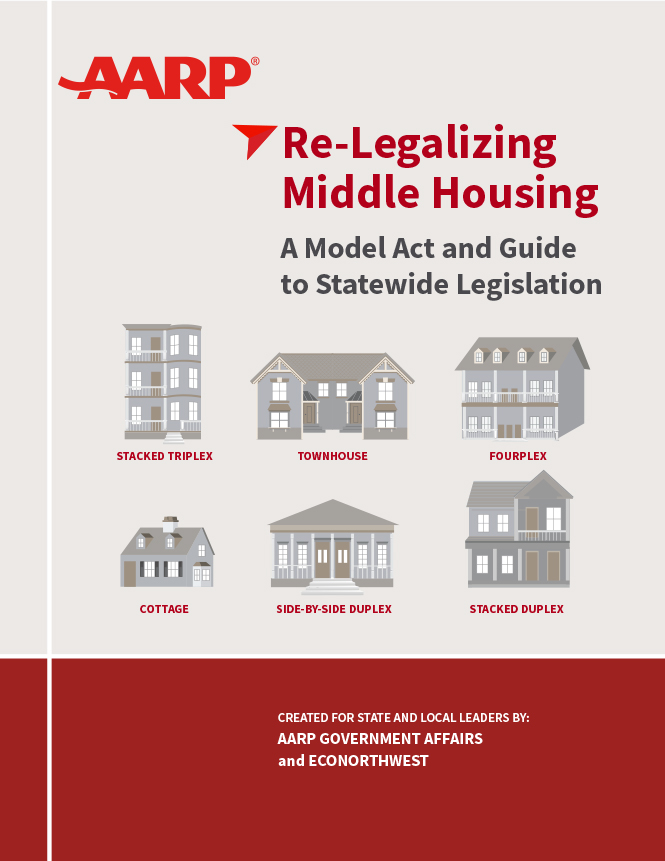Re-Legalizing Middle Housing
Download a free model act and guide to statewide legislation
The 2021 AARP Home and Community Preferences Survey of adults age 18 or older shows that most Americans, including the 50-plus, prefer to live in walkable neighborhoods that offer a mix of housing and transportation options — and are close to jobs, schools, shopping, entertainment and green spaces. AARP believes that "Middle Housing" developments can meet these needs.
Get the Guide
Re-Legalizing Middle Housing: A Model Act and Guide to Statewide Legislation provides options for state and local governments to create and enact effective, customized, Middle Housing legislation that works.
As the population of older adults grows, the importance of creating of a variety of housing options will only increase.
Older homeowners who want to sell their residence and move into something nearby that's more affordable, compact and accessible routinely discover such housing doesn't exist. With people living longer, more and more older adults will be increasingly reliant on family caregivers. Middle Housing (also referred to as "Missing Middle Housing") can help family members live with or near one another while still having their own space or residence.
Among the key characteristics and qualities of Middle Housing:
- In appearance, Middle Housing-styles typically look like, and are the size of, single-family dwellings.
- The buildings fit seamlessly into neighborhoods, either because similar housing types exist in the community or because the homes are designed and constructed to preserve or complement the streetscape’s appearance and character.
- The house-sized, multiunit structures can provide a neighborhood or community with a wider range of housing options, at various price points.
- The housing fits within — and helps to generate — walkable, place-based neighborhoods with amenities that become an extension of people’s homes and serve as shared spaces where neighbors can safely get out and about and gather.
That’s why AARP Government Affairs has collaborated with ECONorthwest to develop a Middle Housing model state act and guide. The publication can empower volunteer leaders, interested residents, planners and government officials to advocate for and establish effective Middle Housing legislation — and help remove the “missing” from “Missing Middle Housing."
AARP has been working with elected leaders nationwide to remove barriers that prevent the construction of Middle Housing. As a companion to the introductory guide Discovering and Developing Missing Middle Housing (see below), this legislative guide can further inspire and enable more local and state leaders to rethink their community's housing needs.
Page published March 2023
Stay Informed — For Free! See Past Issues
The weekly, award-winning AARP Livable Communities e-Newsletter provides local leaders with information and inspiration for making their town, city or neighborhood more livable for older adults and people of all ages. Subscribe today!
AARP.org/Livable
Find articles, publications and more





